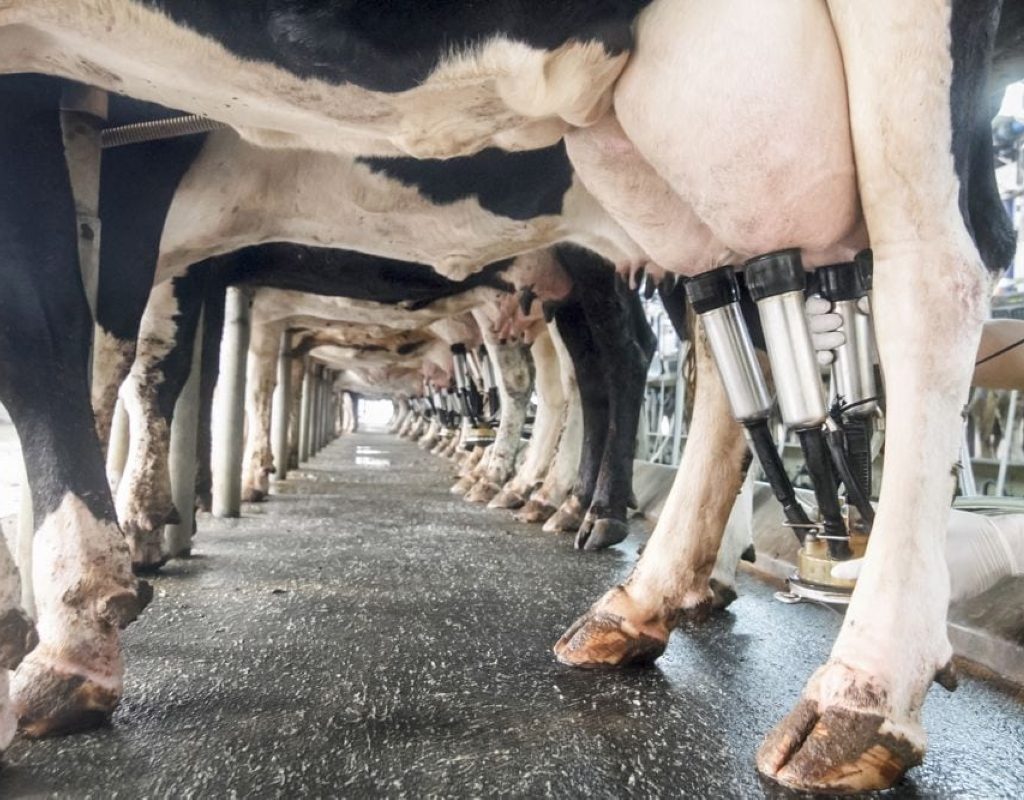U.S. complaints about protectionist Canadian dairy policy hypocritical, report argues
American, Canadian dairy sectors employ similar protectionist tactics says Mussell
| 2 min read

Photo: Getty Images Plus
The U.S. is in no position to lecture Canada on protectionist dairy policy according to a new report.
“In international relations, the pot can call the kettle black — but doing so doesn’t build trust, goodwill, or alliances, and weakens credibility,” said Al Mussell, Agri-Food Economic Systems’ research lead and author of the policy paper.
Despite criticisms of Canadian dairy policy, the American dairy industry has many of the same protectionist tendencies Canada does, Mussell argued in Throwing Stones from a Glass House: Understanding the US Narrative on Canada Dairy Policy.
Complaints from the industry, President
Earlier this month, U.S. President Donald Trump wrote an open letter in which he accused Canada of charging “extraordinary Tariffs to (American) Dairy Farmers — up to 400%.”
This figure has been disputed, though Canada’s dairy tariffs are over 200 per cent.
Recently members of the National Milk Producers Federation in the U.S. told the U.S. International Trade Commission that Canada was undermining American dairy producers’ access to foreign markets with “artificially low-priced exports.”
Despite the frequent American complaints, “there are many similarities in dairy and trade policies between the U.S. and Canada,” Mussell said in a news release.
Systems compared
These policy parallels include pricing milk collected from farms in end-use classes and “barriers to imports that facilitate the operating of their respective milk marketing systems,” the paper said.
In trade policy, both countries use tariffs and tariff-rate quotas (TRQs).
“The level of access that Canada offers to its dairy market via TRQs is … proportionately much higher than the U.S.,” due to high accessibility for products like skim milk powder,” said Mussell.
The two countries are also remarkably similar in how they administer permits and allocate TRQ.
The U.S. has objected to the allocation of dairy import permits by Canada to processors, “but this is what the U.S. does,” Mussell wrote.
He noted Canada allocates dairy import permits proportional to historical imports or output and so does the U.S.
Although the U.S. has complained that Canada doesn’t fill some of its dairy import quotas, Mussell said the U.S. leaves many of its own dairy import quotas unfilled.
Meanwhile, the U.S. also employs policy measures that distort markets, like pooling of milk revenue to advantage dairy manufacturing, and non-tariff barriers relating to Grade A milk products that the U.S . employs and Canada does not.
Mussell also noted the crucial differences between the two countries’ systems, like the pricing structure. Canada’s system is based mostly on cost of production. The U.S. pricing structure is more variable, requiring government stabilization program support.
The similarity between the two nations’ dairy trade policy presents an opportunity for alignment, Mussell concluded.
The full policy note is available here.


